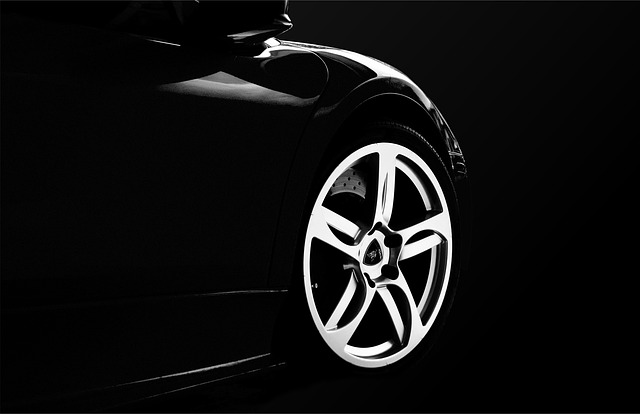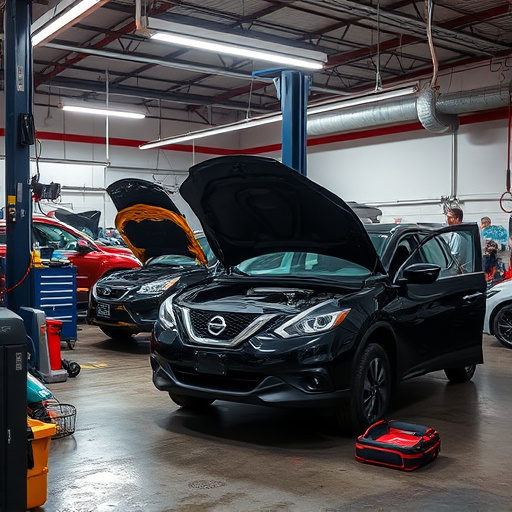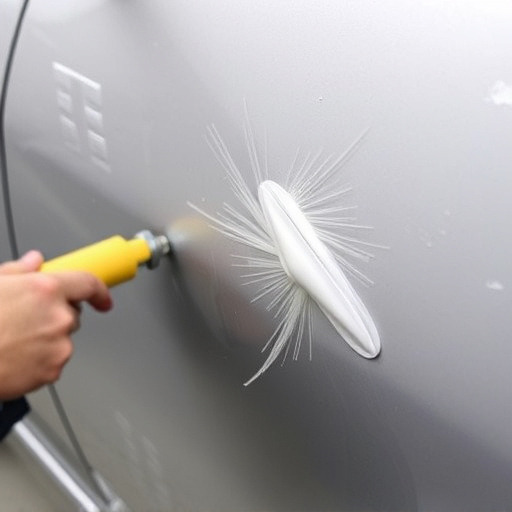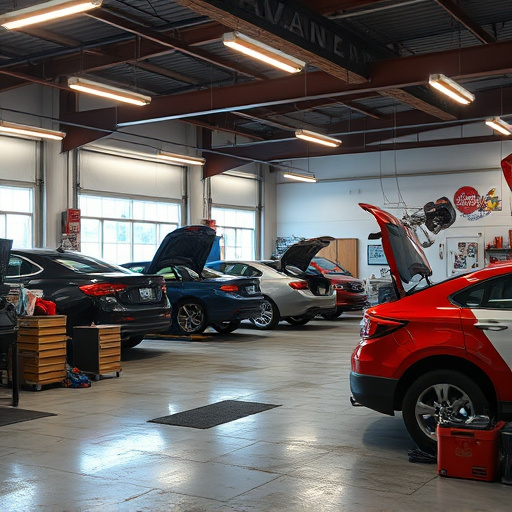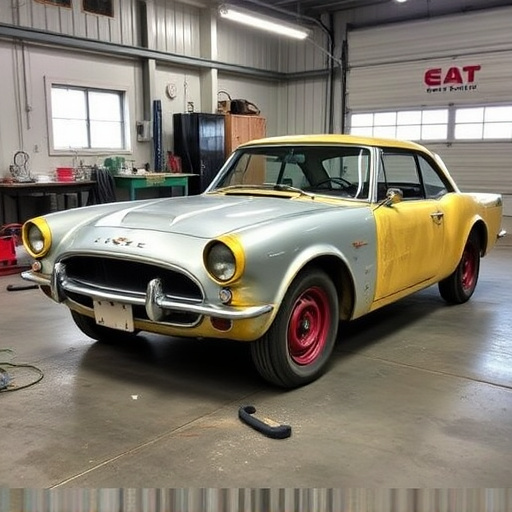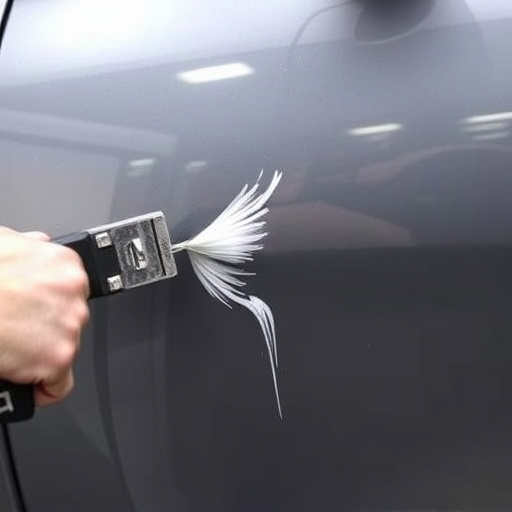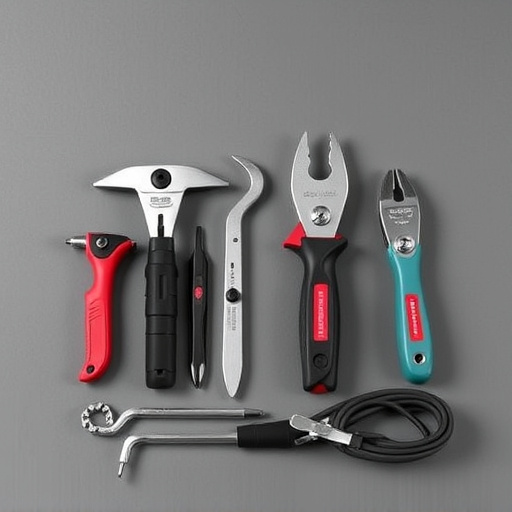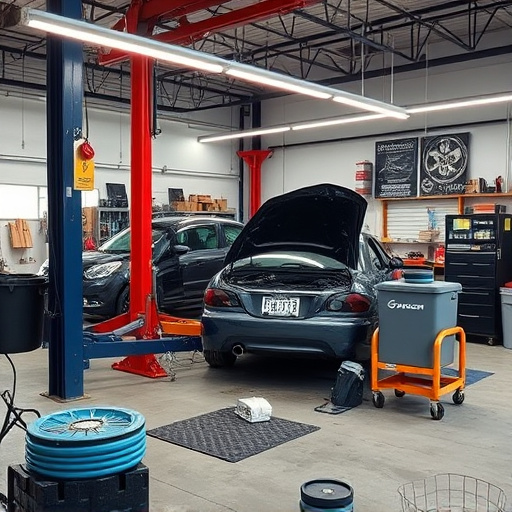Spot welding equipment is a specialized toolset vital in automotive repair services, using high-energy arcs to fuse metal pieces for structural integrity. Key components include power sources, electrodes, and control systems that enable precise adjustments of current, voltage, and pulse duration. This non-invasive method creates strong bonds without melting or distorting metal, ideal for intricate collision repairs. Choosing the right equipment with factors like power output and current control is crucial for achieving consistent, structural welds, with safety protocols and proper training essential.
“Uncover the power of spot welding equipment—a game-changer in automotive repairs. This comprehensive guide explores the science behind this precise technique, offering insights into its fundamentals and benefits. From understanding the basics of spot welding equipment to delving into the resistance spot welding process, we demystify this technology.
Learn how to choose and utilize these tools effectively, ensuring optimal results for your repair projects. Discover the key role spot welding equipment plays in modern vehicle maintenance.”
- Understanding Spot Welding Equipment Basics
- The Science Behind Resistance Spot Welding
- Choosing and Using Resistance Spot Welders
Understanding Spot Welding Equipment Basics

Spot welding equipment is a specialized toolset designed for precise and efficient metal joining, making it an indispensable asset in various industries, notably automotive repair services. At its core, spot welding involves using high-energy arcs to fuse two or more metal pieces together, creating strong, permanent bonds. This process is particularly valuable in auto body repairs where structural integrity is paramount.
The basics of spot welding equipment encompass several key components: power sources, electrodes, and control systems. Power sources generate the electrical energy required for the welding arc, while electrodes facilitate the transmission of this energy to the workpiece. Advanced control systems enable operators to precisely adjust parameters like current, voltage, and pulse duration, ensuring consistent and controlled welds. This level of precision is crucial when performing body shop services, as it allows for accurate replication of original vehicle designs and maintains structural integrity.
The Science Behind Resistance Spot Welding
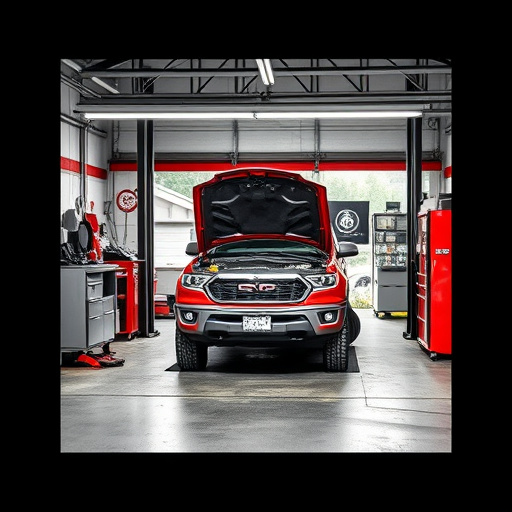
The Science Behind Resistance Spot Welding is a precise and powerful technique used extensively in the automotive industry for car body repairs and car paint repair processes. This method involves applying a concentrated electric current through a metal joint, causing resistance heating and rapidly fusing the materials together. The key lies in the equipment; specialized spot welding guns deliver controlled pulses of energy, allowing for precise temperature regulation. This ensures deep penetration while minimizing heat impact on surrounding areas, making it ideal for intricate collision repair shop procedures.
Unlike traditional welding methods, spot welding equipment offers a non-invasive approach, creating strong bonds without melting or distorting the metal. This precision is particularly valuable in car body repair, where maintaining structural integrity and aesthetic appeal is paramount. The science behind it combines electrical engineering, materials science, and advanced machinery to deliver a game-changer in the field of collision repair shops, ensuring faster, more efficient, and durable repairs.
Choosing and Using Resistance Spot Welders
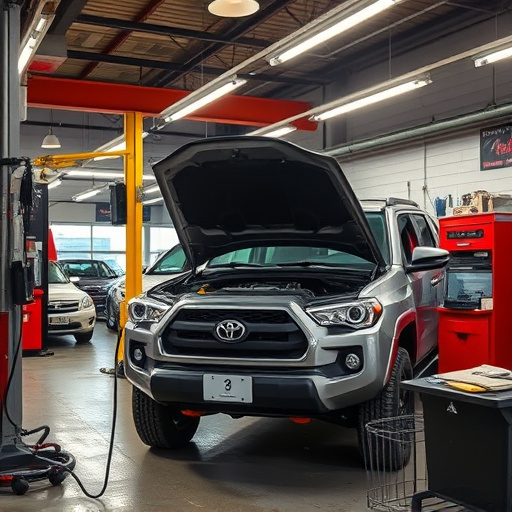
Choosing the right spot welding equipment is a critical step for any vehicle body shop looking to excel in fender repair and car bodywork services. Resistance spot welders are designed with various features catering to different applications, so understanding your specific needs is key. When selecting a welder, consider factors like power output, current control, and the ability to adjust welding parameters – these ensure precise and consistent welds, crucial for achieving structural integrity in car bodywork repairs.
For instance, if you primarily work on lighter vehicles or intricate components, a compact, handheld spot welder might be suitable. Conversely, heavier-duty jobs like repairing vehicle bodies may require a more powerful, stationary machine with advanced features for faster welding cycles. Proper training and adherence to safety protocols are also essential when using spot welding equipment to prevent accidents and ensure the best results in any fender repair process.
Spot welding equipment plays a pivotal role in modern repair and manufacturing processes, offering precise and efficient joining solutions. By understanding the science behind resistance spot welding, choosing the right tools, and mastering their use, professionals can ensure high-quality, durable bonds that meet industry standards. Armed with this knowledge, workshops can streamline operations, reduce waste, and deliver superior results using these versatile and powerful spot welding equipment technologies.
